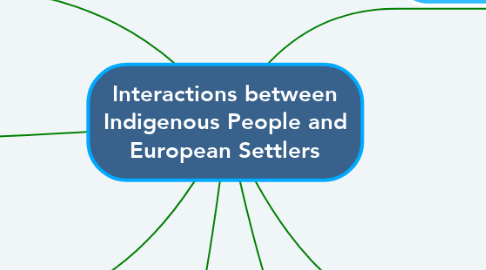
1. Residential School System
1.1. Woolford (2013): The Indigenous people fought to retain their cultural traditions and their connection to the land. Adults Indigenous were deemed stubborn and barbaric by the government. The Residential school system was initiated as way for the government to transform Indigenous children into near Europeans.
2. Community and Culture
2.1. Woolford (2013): Forcible assimilation affected the traditional culture of the Indigenous peoples and their connection to their land. The exclusion (reserves) and reformation (residential school) severed their connection to the land and limited their access to freedom of movement.
3. Questions
3.1. How do we equally present Western and Indigenous ideas within our Social Studies lessons so that one does not become superior to the other?
3.2. How do we emphasize the importance of this interrelationship between Indigenous people and their land?
3.3. How do we connect the traditional teachings of the Indigenous communities with their modern realities and needs?
4. Eurocentric views are still so prominent. Especially within textbooks, it focuses on settlers and their perspectives.
5. Indigenous Education and Pedagogy
5.1. Preservice Teachers Programs
5.1.1. Nardozi et al. (2014): To be able to teach students properly about Indigenous perspectives and the relationship to the land, we must first train our teacher candidates about what Indigenous knowledge is, and HOW to implement it into their classroom.
5.1.2. Goulet & Goulet (2014): Indigenous pedagogy must be integrated meaningfully, not just isolated attempts or else it falls flat - the impact is short-lived.
5.2. Current Teachers:
5.2.1. A lot of teachers lack knowledge in this subject area and don't feel comfortable nor confident to teach it. When we do teach, we can't just focus on content, we have to acknowledge their identity. Goulet & Goulet (2014) state that "students should not have to leave their Indigenous identities behind to be successful in school"
5.2.2. Marker (2014) discusses that for Indigenous people, animals are central to their way of life as they were created prior to humans, and thus are wiser than humans, and pillars of their culture. As a result, animals are not just resources (as Western ideas like to think) but important members of their society. These are fundamental teachings that current teachers must embed into their social studies lessons.
